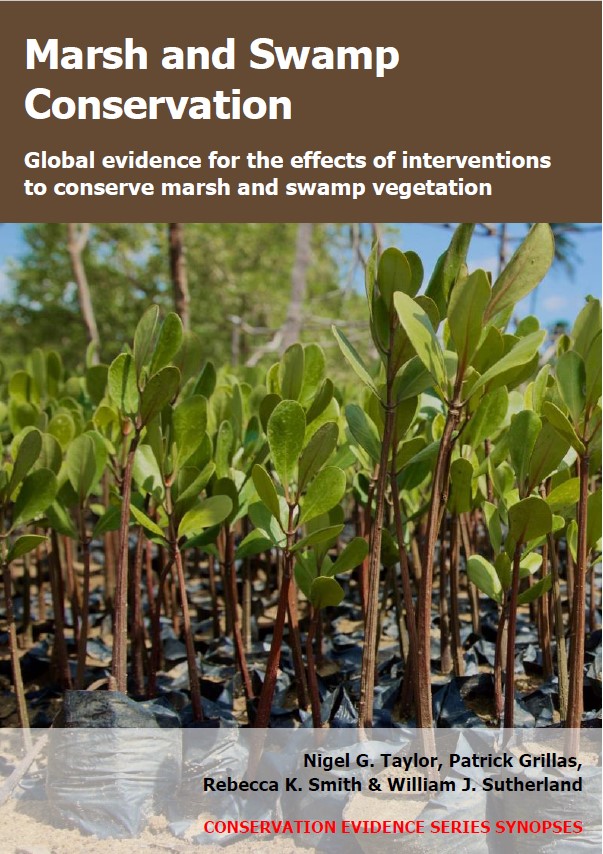Introduce organisms to control problematic plants: freshwater swamps
-
Overall effectiveness category Unknown effectiveness (limited evidence)
-
Number of studies: 1
View assessment score
Hide assessment score
How is the evidence assessed?
-
Effectiveness
54% -
Certainty
24% -
Harms
0%
Study locations
Supporting evidence from individual studies
A replicated, randomized, controlled study in 2013–2014 in a floodplain swamp invaded by Mexican petunia Ruellia simplex in Florida, USA (Smith et al. 2016) found that amongst plots sprayed with herbicide, planting native wetland herb species increased plant species richness. Four herb species were planted, with survival rates of 2–57% after one year. Over this year, planted plots had higher plant species richness (total: 5.2; native: 3.8 species/2.25 m2) than unplanted plots (total: 1.8; native: 0.6 species/2.25 m2). However, planted and unplanted plots contained a statistically similar amount of Mexican petunia. This was true for density (planted: 8–31 stems/0.56 m2; unplanted: 5–35 stems/0.56 m2), cover (planted: 39%; unplanted: 55%) and, after 12 months, biomass (planted: 4 g/m2; unplanted: 8 g/m2). Methods: Fourteen 1.5 x 1.5 m plots were established in a floodplain swamp, where invasive Mexican petunia had been controlled (but not eradicated) with herbicide. In November 2013, seven random plots were planted with greenhouse-reared herbs (four species; four plants/species/plot; individual plants 30 cm apart). The other seven plots were not planted. Vegetation was surveyed for one year after planting.
Study and other actions tested
Where has this evidence come from?
List of journals searched by synopsis
All the journals searched for all synopses
This Action forms part of the Action Synopsis:
Marsh and Swamp Conservation
Marsh and Swamp Conservation - Published 2021
Marsh and Swamp Synopsis





)_2023.JPG)














